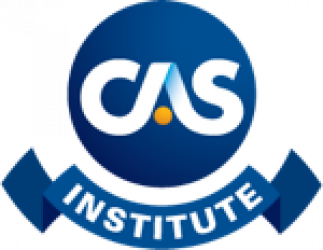Credential Requirements
The requirements for earning the Certified Specialist in Catastrophe Risk (CSCR) credential include completing one online course, passing four exams, and completing an online ethics module. Whenever possible we use the same text books for multiple exams.
The standard assessments required for earning the CSCR are as follows:
Exam 1: Property Insurance Fundamentals
This online course provides the risk management and insurance background an analyst needs in order to appreciate the context and content of catastrophe modeling: coverages, policy design and parameters, etc.
Covers topics from a broad risk management perspective relevant to risk managers and agents and brokers, as well as underwriters, catastrophe modelers, actuaries, and other specialists in the field.
- Major lines of (re)insurance with an emphasis on catastrophe exposed lines
- Basics of (re)insurance accounting terminology
- (Re)Insurance policy and terms and conditions and qualitative understanding of their impact on catastrophe losses
Exam 2: Catastrophe Risk in the Insurance Industry
Exams 1 and 2 together include all the policy information an analyst would encounter as they use catastrophe models so they can understand the meaning of model inputs, can specify a reasonable range of input values, quantify the likely distribution of values etc.
- History of catastrophe models and why they are used
- Use of catastrophe models within the (re)insurance industry and, more broadly, risk management
- Historical context of catastrophe losses
- (Re)Insurance industry organization
- Standards of practice
Exam 3: Introduction to Catastrophe Modeling Methodologies
Exam 3 covers aspects of catastrophe modeling that are generally applied to perils irrespective of global region. The emphasis is on the mechanism of catastrophe modeling rather than setting up or using the models (model output is broadly peril-independent and is covered in Exam 4).
The exam will ask candidates to describe the considerations involved in building the hazard and vulnerability modules for the two primary perils: wind (hurricane/tropical cyclone/typhoon) and earthquake. These two perils will be covered at a moderately deep level.
At a higher level, candidates will need to describe special considerations for secondary perils, emphasizing the common structure of catastrophe models, but highlighting particular peril nuances (at the “be aware of” level).
- Design of catastrophe models: high level overview (common to all perils)
- Hazard
- Vulnerability
- Financial
- The concept of simulation and Monte Carlo methods
- Statistics used to parameterize models (common to all perils)
- Regression models
- Geospatial regression models (special error structures)
- Sampling errors
- Process and parameter risk
- Hurricane hazard
- Parameters used to describe a hurricane
- Path
- Maximum windspeed, including discussion measurement (gust, peak, sustained)
- Radius of maximum windspeed
- Central pressure
- Saffir Simposon
- Parameters used to describe a hurricane
- Hurricane vulnerability
- Earthquake hazard
- Parameters used to describe an earthquake
- MMI, Richter scale, PGA
- Location and type of major faults throughout world; faultline vs. zonal
- Parameters used to describe an earthquake
- Earthquake vulnerability
- Survey unique issues for other perils
- Winter storm
- Flood (pluvial and fluvial)
- Severe convective storm
- Wildfire
Exam 4: The Cat Modeling Process
This exam covers catastrophe risk management broadly, with an emphasis on the use of models. It will focus on the process that is largely peril independent. There are three subsections:
- The mechanics of catastrophe modeling: preparing data for modeling and using the model output to make business decisions.
- The probability and statistics needed to understand and interpret catastrophe model output.
- The use of catastrophe model output to make risk management business decisions.
- General data concepts
- Managing the catastrophe modeling process and the catastrophe modeling workflow
- Understanding catastrophe model output
- Working with, using and communicating catastrophe model output
Part 5: Ethics and Professionalism Course
Choose one of the following:

